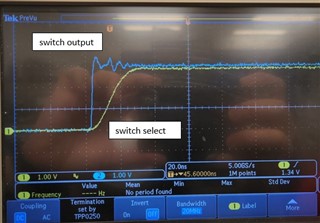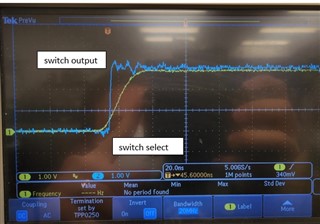Other Parts Discussed in Thread: TS5A3159A,
We have a board which biases SN74LVC1G3157 switches at 5.0V but the switch signal is driven by 3.3V I/O. This was a design mistake which we'll rectify, but our concern is for systems already deployed. Checking signals, we see switching occurring consistently but in some cases outputs switching just before switch signals begin to transition. We speculate noise at the start of switch signal assertion is somehow causing switches to switch prematurely? Perhaps excessive shoot through currents damaged the switches to make them susceptible to this behavior? Our new TS5A3159A switches don't do this and switch as expected. Here are example waveforms:

Can anyone explain this unexpected behavior?
Shel


